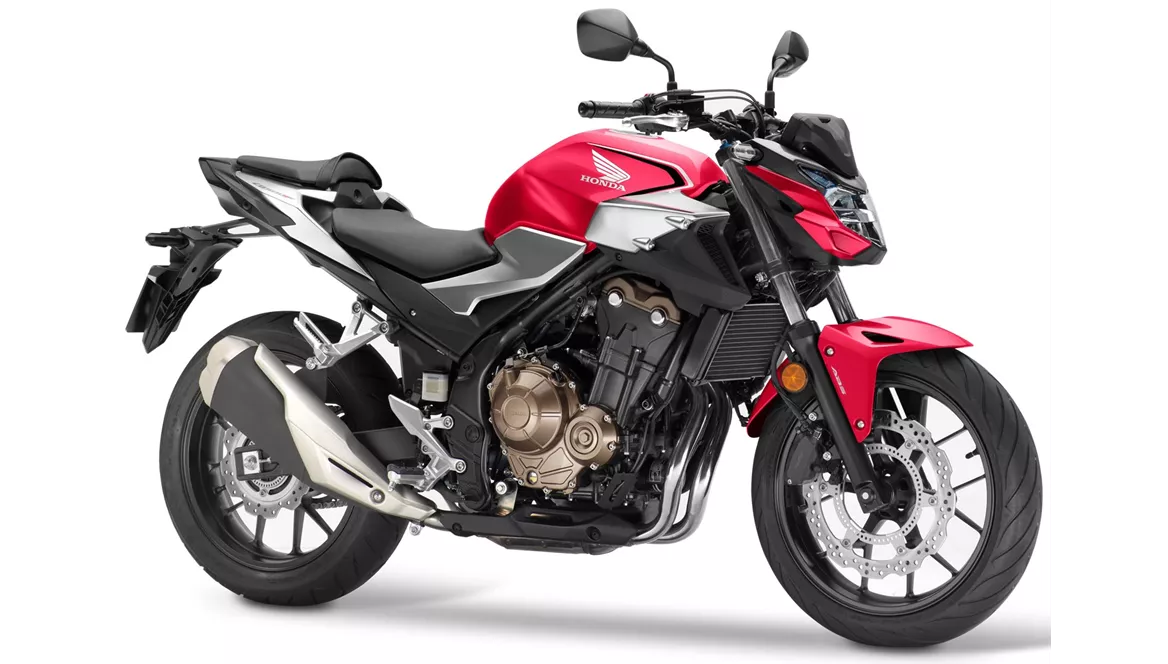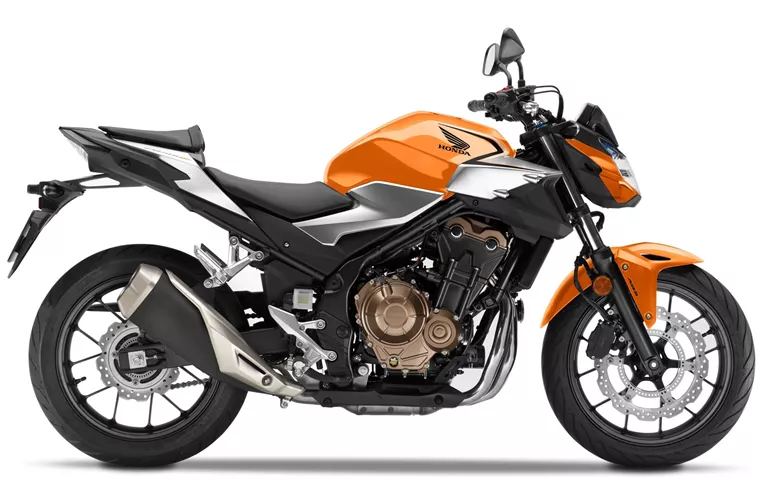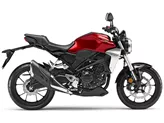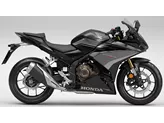Honda CB300R 2018 vs. Honda CB500F 2019

Honda CB300R 2018

Honda CB500F 2019
Vue d’ensemble - Honda CB300R 2018 vs Honda CB500F 2019
The Honda CB300R 2018 and the Honda CB500F 2019 are both naked bikes with similar design aesthetics. However, there are notable differences in their technical specifications and performance.
In terms of engine power, the Honda CB300R 2018 has a lower output with 31 HP compared to the Honda CB500F 2019, which boasts 48 HP. This significant difference in power translates to a more thrilling and dynamic riding experience on the CB500F. Additionally, the CB500F offers a higher torque of 43 Nm, providing better acceleration and responsiveness.
Both models feature fuel injection systems and liquid cooling, ensuring efficient fuel consumption and optimal engine performance. However, the Honda CB300R 2018 has a single-cylinder engine, while the CB500F 2019 is equipped with a twin-cylinder engine. This difference in cylinder configuration affects the overall smoothness and refinement of the engine, with the CB500F offering a more balanced and refined power delivery.

Honda CB300R 2018
In terms of chassis, both bikes feature steel frames, providing strength and stability. The Honda CB300R 2018 offers truly smooth handling, with a chassis that provides stability and comfort. On the other hand, the CB500F 2019 is described as playful and easy to handle, making it a great option for riders seeking agility and maneuverability.
When it comes to braking, the Honda CB300R 2018 has a single disk front brake with four pistons, while the CB500F 2019 features a double piston front brake. Although both models offer reliable braking performance, some riders have reported that the front brake on the CB300R requires more hand force than expected. Similarly, the CB500F's brake lever also requires a significant amount of force to engage.
In terms of dimensions and weights, the Honda CB500F 2019 is slightly larger and heavier than the CB300R 2018. The CB500F has a longer wheelbase of 1410 mm compared to the CB300R's 1352 mm, providing added stability at higher speeds. However, the CB300R has a lower seat height of 799 mm, making it more accessible for riders with shorter inseams. The CB500F also has a larger fuel tank capacity of 15.7 liters, allowing for longer rides without the need for frequent refueling.

Honda CB500F 2019
In terms of additional features, the Honda CB300R 2018 comes equipped with IMU-ABS and full LED lighting, enhancing safety and visibility on the road. However, it is worth noting that the CB300R is considered to be less equipped than its competitors in terms of features.
On the other hand, the Honda CB500F 2019 features a smart LCD display that provides all necessary information to the rider, enhancing convenience and usability. The CB500F also boasts low fuel consumption, making it an economical choice for riders looking to save on fuel costs.
In summary, while both the Honda CB300R 2018 and the Honda CB500F 2019 are capable naked bikes, they cater to different types of riders. The CB300R offers smooth handling and top build quality, but may be considered less equipped compared to its competitors. On the other hand, the CB500F provides a more powerful and dynamic riding experience, with a playful nature and a range of convenient features. However, it is worth noting that both models have reported issues with the front brake, requiring more force to engage.
Caractéristiques techniques Honda CB300R 2018 par rapport à Honda CB500F 2019
Avantages et inconvénients en comparaison
Avantages et inconvénients en comparaison
Honda CB300R 2018

L'expression un peu galvaudée "la puissance ne fait pas tout !" prend tout son sens avec la nouvelle Honda CB300R. Cette moto pourrait être vendue comme l'incarnation de la légèreté, tant en termes de poids que de maniabilité. La qualité de la finition, combinée à un style réussi, aidera certainement à faire oublier les caractéristiques / options pas très complètes. La CB300R est donc un véritable atout pour le segment A2 !
Honda CB500F 2019

En résumé, la nouvelle CB500F répond toujours pleinement à la devise "ludique et sans effort". Grâce aux modifications apportées à l'admission et à l'échappement, le moteur offre désormais 4% de puissance supplémentaire dans la plage de régime comprise entre 3.000 et 7.000 tours, ce qui devrait se ressentir positivement dans l'utilisation quotidienne, moins rapide mais d'autant plus importante. Les autres nouveautés, telles que l'embrayage anti-saut, l'écran LCD avec indicateur de rapport ainsi que le fier guidon, facilitent encore davantage la vie des débutants en deux-roues. À mon avis, un contrôle de traction n'est pas nécessaire sur les machines A2. Au contraire, je suis d'avis qu'il n'y a pas de mal à apprendre à utiliser correctement sa main droite dès le début. La CB500F est en effet parfaitement adaptée à ces débuts. Et même les pilotes expérimentés pourraient être séduits par sa souplesse. Surtout lorsque la route est en descente.
Comparaison des prix Prix moyen du marché Honda CB300R vs Honda CB500F
There are a few key differences between a Honda CB300R 2018 and a Honda CB500F 2019. It takes less time to sell a Honda CB500F with 71 days compared to 140 days for the Honda CB300R. Since model year 2018 1000PS.de editors have written 6 reviews for the Honda CB300R and 22 reviews for the Honda CB500F since model year 2013. The first review for the Honda CB300R was published on 11/6/2017 and now has more than 36,500 views. This compares to more than 18,500 views for the first review on Honda CB500F published on 11/10/2012.


















